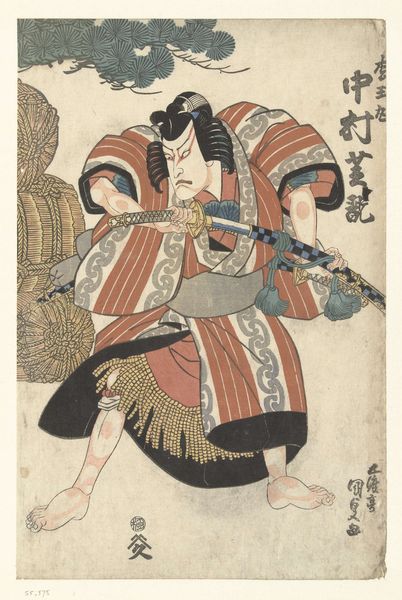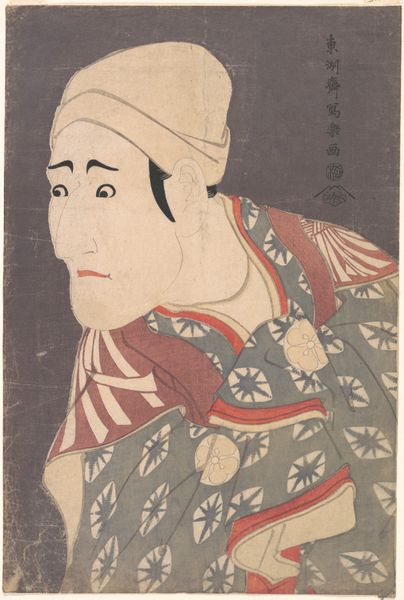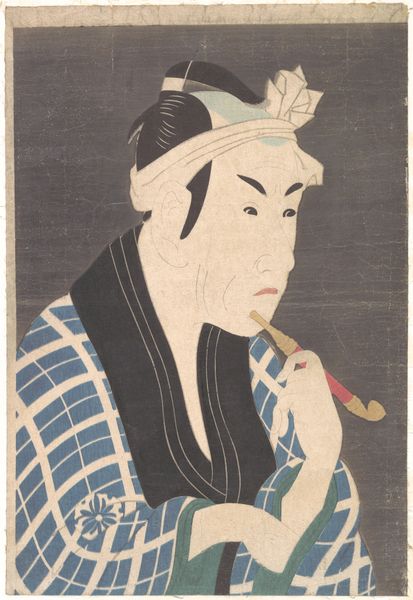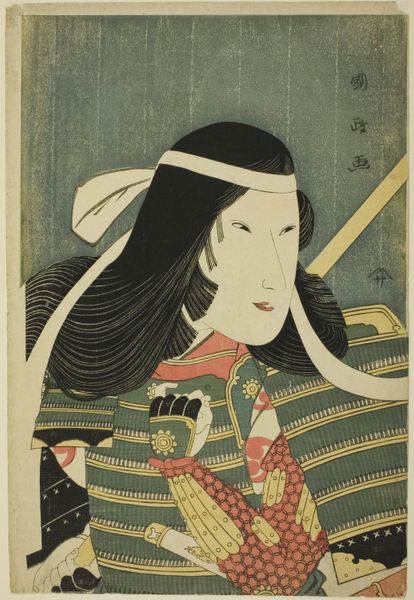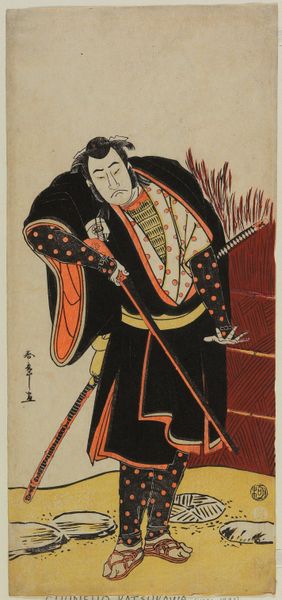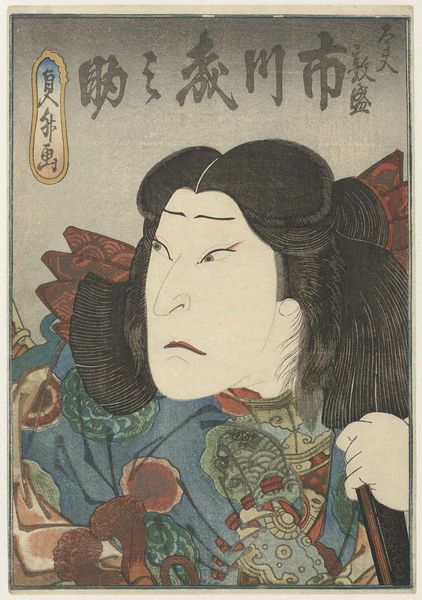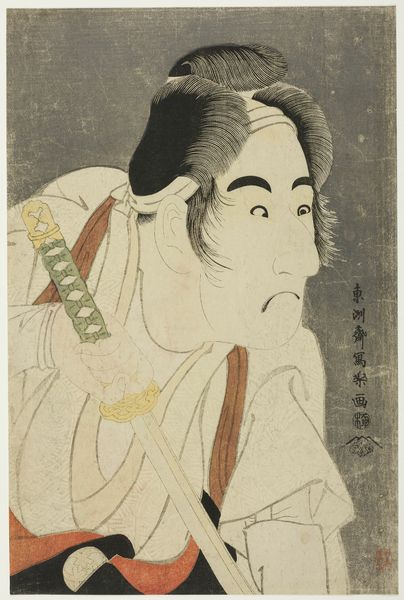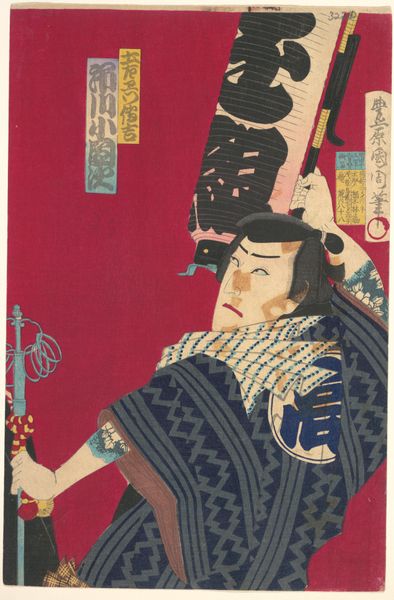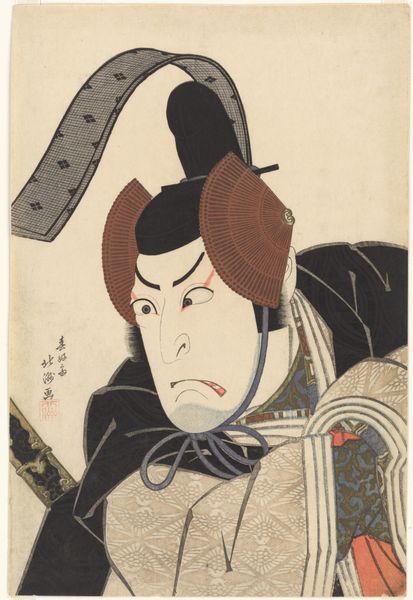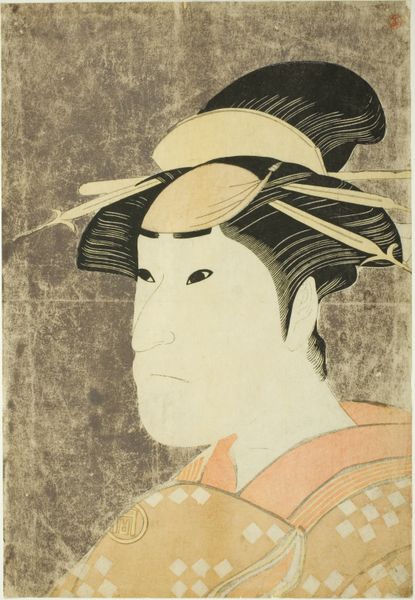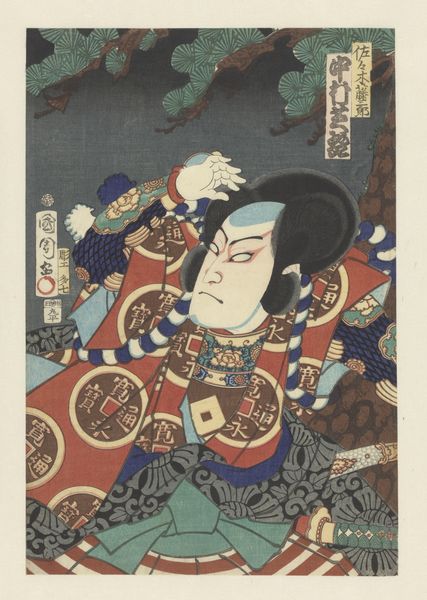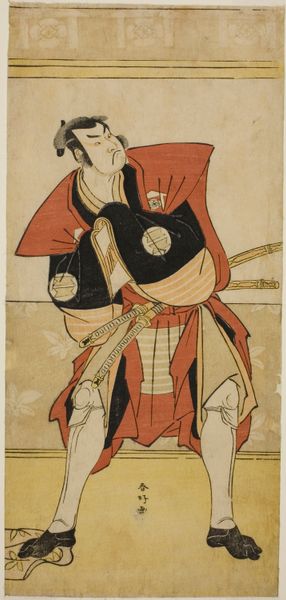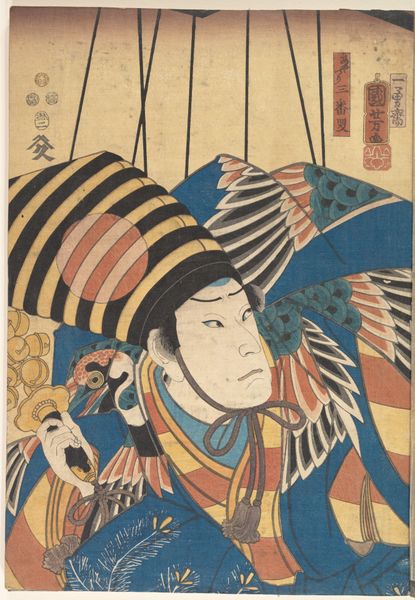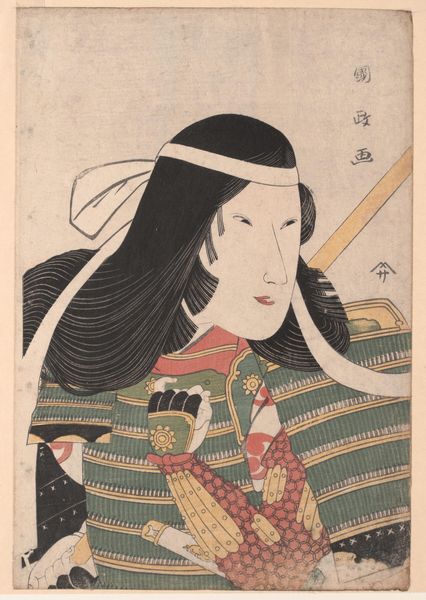
Nakamura Nakazo II as Prince Koretaka disguised as the farmer Tsuchizo in the play "Intercalary Year Praise of a Famous Poem (Uruo Toshi Meika no Homare)," performed at the Miyako Theater in the eleventh month, 1794 1794
0:00
0:00
#
portrait
# print
#
caricature
#
asian-art
#
caricature
#
ukiyo-e
Dimensions: 31.7 × 21.7 cm
Copyright: Public Domain
Editor: So, this striking image is a woodblock print by Tōshūsai Sharaku from 1794. It’s titled “Nakamura Nakazo II as Prince Koretaka disguised as the farmer Tsuchizo…”, quite a mouthful! What grabs me immediately is the, well, exaggerated features. How should we interpret the presentation of the subject here? Curator: It’s key to understand Sharaku’s work within the context of Edo-period theater and print culture. The exaggerated features aren’t necessarily a personal judgment but reflect the stylized conventions of *yakusha-e*, actor prints. These prints weren't just portraits, they were advertisements, celebrity endorsements. The highly stylized, almost caricatured features, served to immediately identify the actor and the role. This particular print shows Nakamura Nakazo II in a dual role, further emphasizing the performative aspect. The question then becomes, how did this exaggerated style function within the social and political landscape of the time? Editor: Ah, so it's about communicating quickly to an audience already familiar with the play and actors? It almost sounds like celebrity culture today! But what about the role of the publisher and the market? Curator: Precisely! Publishers were integral. They chose which actors and plays to feature, understanding the audience’s desires. Think about the social hierarchies: kabuki actors, despite their popularity, were often seen as existing outside the strict social order. Sharaku's prints, distributed widely, both reflected and perhaps challenged those hierarchies. To what extent do you think these prints reinforced or subverted those societal views? Editor: I suppose that the act of celebrating these performers in mass-produced art forms might have made them more visible and perhaps more accepted…at least by certain segments of society. It's fascinating to see how deeply art could be entangled with social status! Curator: Indeed. Sharaku’s prints offer a powerful lens through which to view Edo society, its theatrical culture, and the complex interplay of art, commerce, and social status. It reminds us art exists in conversation with socio-political dynamics. Editor: Absolutely, and considering its context, it adds so much more than the caricature impression at first sight!
Comments
No comments
Be the first to comment and join the conversation on the ultimate creative platform.
